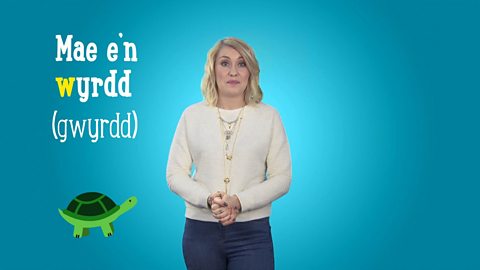Grammar
Common rules and patterns – WJEC
Understanding grammar means learning how patterns work and being able to transfer them to different situations. This will help you communicate effectively and correctly, so, why not give it a go?

Mutations – soft, nasal, aspirate – WJEC
Being able to mutate is important when speaking and writing Welsh accurately. Learn when each type of mutation is needed and how the beginning of words change when using each one.

Idioms and expressions – WJEC
When you learn to speak and write a new language it's important to use the correct expressions and idioms. Learn when to use them naturally and improve your spoken and written Welsh.

Useful verbs – WJEC
Improve your written and spoken Welsh by practising commonly used verbs. Learn about the most useful ones, which endings to use with them and look at examples of how to use them correctly.

Various tenses – WJEC
Being able to use different tenses correctly is very important when you learn a language. Learn how to describe the past and talk about the future, and give affirmative and negative answers.

Video playlist
Treiglad llaes - Aspirate mutation. Video
Top tips to remember which three letters change, and when, in a treiglad llaes.

Treiglad meddal - Soft mutation. Video
The soft mutation is the most common mutation so learn which nine letters change and when.

Treiglad trwynol - Nasal mutation. Video
The cat purrs but dogs growl! Don't know what this means? Watch this video to find out.

Ateb Ie a Na - Answering Yes and No. Video
Follow these tips to remember the responses to 'Wyt ti…?' and 'Oes…?' questions in Welsh.

Defnyddio y, yr, 'r - Using 'the' Video
Did you know there are three ways to say 'the' in Welsh: y, yr and 'r.

Y gorffennol - The past. Video
Remember the most common irregular verbs in Welsh and what to do with other verb endings.

Links
- External linkExternal link
- External linkExternal link
- External linkExternal link
- External linkExternal link